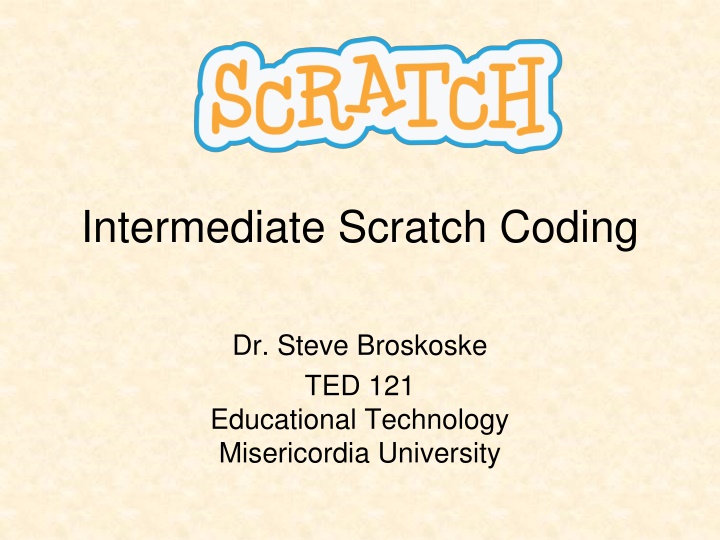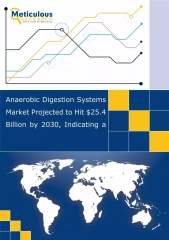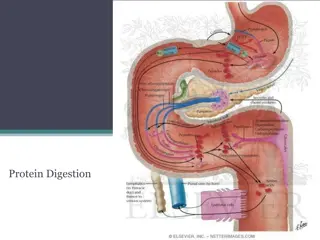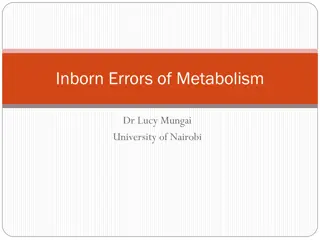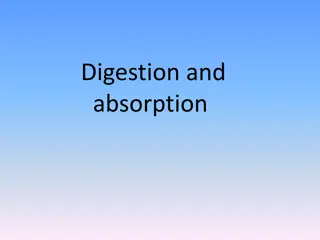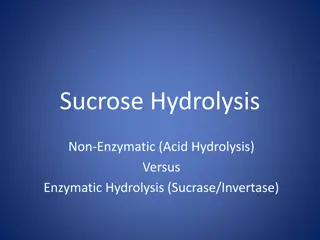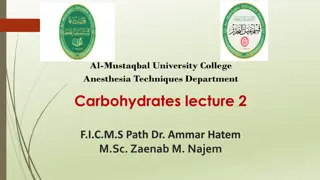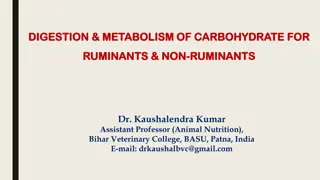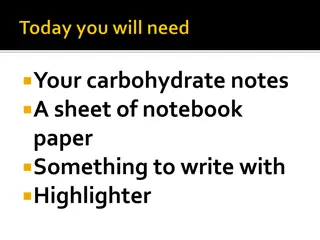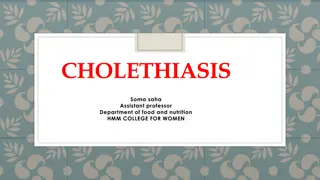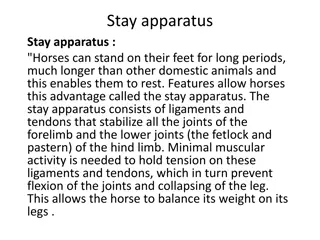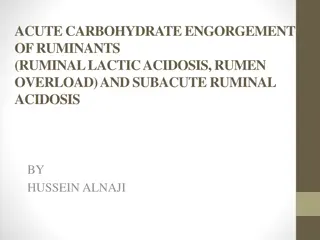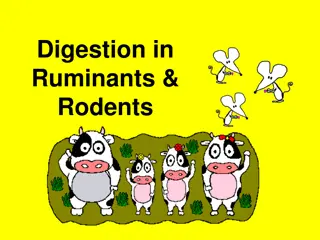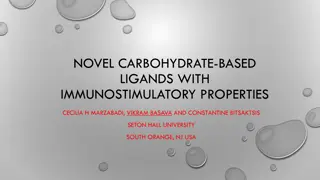Carbohydrate Digestion and Metabolism in Ruminants and Non-Ruminants
This article discusses the digestion and metabolism of carbohydrates in both ruminants and non-ruminants, highlighting the main digestive enzymes, sources, and substrates involved in the process. It covers the importance of salivary digestion, gastrointestinal tract function, and the role of different enzymes in carbohydrate breakdown for optimal nutrient absorption.
Download Presentation

Please find below an Image/Link to download the presentation.
The content on the website is provided AS IS for your information and personal use only. It may not be sold, licensed, or shared on other websites without obtaining consent from the author.If you encounter any issues during the download, it is possible that the publisher has removed the file from their server.
You are allowed to download the files provided on this website for personal or commercial use, subject to the condition that they are used lawfully. All files are the property of their respective owners.
The content on the website is provided AS IS for your information and personal use only. It may not be sold, licensed, or shared on other websites without obtaining consent from the author.
E N D
Presentation Transcript
Intermediate Scratch Coding Dr. Steve Broskoske TED 121 Educational Technology Misericordia University
Exploring Scratch Navigate to Scratch: https://scratch.mit.edu/ Scratch online Scratch online
Categories of Code Blocks Motion. Looks. Events. Control. More blocks. (Click extensions in lower left.) Sound. Sensing. Operators. Variables. Let s focus on these blocks today.
Add a Sprite Change Backdrop 1) Add a backdrop. 2) Drag this coding block and click to run. Add a sprite.
Moving a Sprite: Add Motion Move (like walk). Glide to a position. Move quickly to a position.
Moving a Sprite: Add Event Click flag. Press a key. Click a sprite.
Moving a Sprite Make a sprite move up/down/right/left when the corresponding arrow key is pressed.
Sprite Actions: Changing Looks Say something. Think something. Try adding an event to trigger the looks to occur.
Introduction to Looping Looping means having code repeat under specific conditions (such as forever or for a set number of times).
Use a Loop to Make a Sprite Dance to Music Start sound. Create a loop to function 10 times. Next costume switches dance positions. Use to slow down motion.
Use a Loop to Animate a Sprite Insert a new sprite: Avery walking. Let s use a loop, changing costumes, and motion to make this sprite walk.
TRY IT 1. Change costumes. Select a sprite that has several costumes (different movements). Make the sprite move around the screen and change costume (movement/position). 2. Use a loop. Select a sprite that has several costumes. Use a loop to cause the sprite to change costumes (movement/position) automatically.
Broadcast Messages You can use these coding blocks to: Send a broadcast message. Trigger a sprite to do something when a broadcast message is received.
Send a Broadcast Message Let s send a broadcast message to trigger some event to start. Batter Button
Broadcast Message: Make Ball Fly Let s send a broadcast message to trigger some event to start. Button Ball Add to trigger ball to move. Add to move ball back to initial position.
Saving Your Work You can save and load Scratch programs to/from your computer (or Cloud account). You can also create a login to save your work online.
Code Using Tutorials Navigate to the following site and experiment with Scratch coding: https://scratch.mit.edu/ideas For each activity presented, you can: Try the Tutorial. Download a set of Coding Cards. View the Educator Guide. Scratch Tutorials Scratch Tutorials
Next Class Practice Scratch programming and have time to create a program (complete an assignment).
